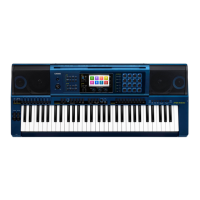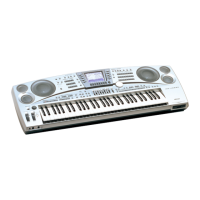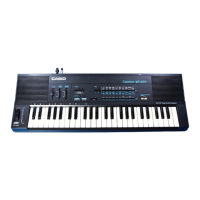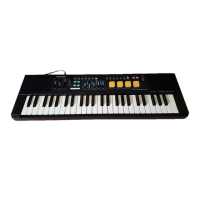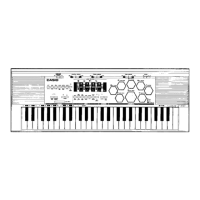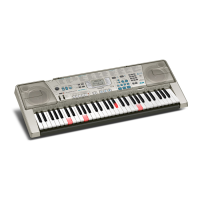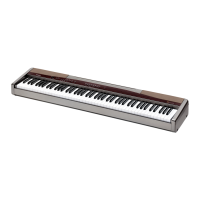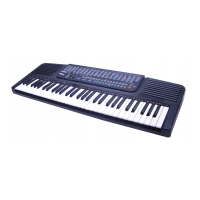EN-8
Editing a Tone (User Tones)
Stretch Tune Stretch tuning. Sharpens high notes and flattens low notes to achieve
characteristic piano stretch tuning. Turn off this setting to play with
normal (non-stretch) tuning.
Off, Piano1, Piano2,
Piano3, Piano4, Piano5,
E.Piano1, E.Piano2
Filter Filter. This is a group of editable parameters associated with filters
(tones).
• With this group, the vertical (Level) axis in the pitch envelope diagram
corresponds to how the filter is applied.
Cutoff Cutoff frequency. Specifies the filter cutoff frequency. –64 to 0 to +63
Resonance Resonance. Specifies the resonance of the tone in the vicinity of the cutoff
frequency.
–64 to 0 to +63
Velocity Sense Velocity sense. Specifies the degree of change in the filter in accordance
with change in keyboard playing touch.
–64 to 0 to +63
Envelope • For details about the parameters below, see “Pitch Envelope”.
Initial Level, Attack Time, Release Time, Release Level
Envelope Depth Envelope depth. Specifies how the envelope is applied. 0 to 127
Attack Level Attack level. Target level reached immediately after note on. –64 to 0 to +63
Decay Time Decay time. Time it takes for the sound to reach the decay level from the
attack level.
–64 to 0 to +63
Decay Level Decay level. Level the sound is sustained as long as a key or pedal is
depressed.
–64 to 0 to +63
Amp Amp. This is a group of editable parameters associated with the amp
(volume).
Volume Volume. Specifies the amp volume. 0 to 127
Velocity Sense Velocity sense. Specifies the degree of change in volume in accordance
with change in keyboard playing touch.
–64 to 0 to +63
Envelope • The vertical (Level) axis in the pitch envelope diagram corresponds to
the volume in the case of this group.
• For details about the parameters below, see “Pitch Envelope”.
Initial Level, Attack Time, Release Time
• For details about the setting items below, see “Filter”, above.
Attack Level, Decay Time, Decay Level
LFO Low Frequency Oscillator. This is a group of editable LFO parameters
applied to pitch, filter, and amp.
Pitch Wave
FilterAmpWave
Wave type. Specifies one of the following wave types to be used for LFO.
FilterAmpWave is shared by filter and amp.
Refer to the cell to the left.
Pitch Rate
FilterAmpRate
Rate. LFO speed (frequency). FilterAmpRate is shared by filter and amp. –64 to 0 to +63
Pitch Depth
Filter Depth
Amp Depth
Depth. Specifies how LFO is applied. –64 to 0 to +63
Pitch Delay
Filter Delay
Amp Delay
Delay. Specifies the degree of delay in the timing for applying LFO. –64 to 0 to +63
Display Text Description Settings
Sin
(sine wave)
Puls 1:3
(square wave 1:3)
Tri
(triangle wave)
Puls 2:2
(square wave 2:2)
Saw up
(sawtooth up
wave)
Puls 3:1
(square wave 3:1)
Saw down
(sawtooth down
wave)
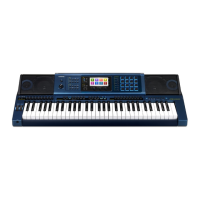
